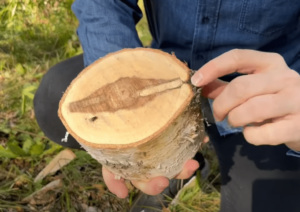Mycorrhizal fungi have emerged as powerful allies in our quest to reverse ecological degradation caused by extensive industrial exploitation and environmental challenges. Understanding their crucial role in rewilding projects, myco-remediation applications, forest establishment, and carbon sequestration is essential for developing effective strategies to restore and rehabilitate ecosystems.
Rewilding Projects:
Mycorrhizal fungi play a pivotal role in rewilding efforts by promoting biodiversity, enhancing soil health, and facilitating plant establishment. By forming symbiotic associations with plant roots, mycorrhizal fungi facilitate nutrient uptake, improve soil structure, and enhance plant resilience. Strategically harnessing mycorrhizal growth can accelerate the restoration of degraded landscapes, promote habitat connectivity, and support the re-introduction of native species.
Myco-Remediation Applications:
Mycorrhizal fungi exhibit remarkable capabilities in myco-remediation, particularly in fighting petrol contamination and pollution caused by heavy metals. These fungi can selectively accumulate and degrade pollutants, mitigating their harmful effects on ecosystems. Integrating myco-remediation strategies into contaminated sites can accelerate the restoration process and minimize environmental risks associated with toxic substances.
Forest Establishment and Recovery:
In the wake of extensive destruction caused by fires, mycorrhizal fungi are vital for forest recovery. These fungi assist in seedling establishment, nutrient cycling, and water absorption, facilitating the regeneration of forested areas. By introducing mycorrhizal inoculants and promoting mycorrhizal diversity, we can expedite the reforestation process and enhance the resilience of newly established forests.
Rehabilitating Desert Regions:
Mycorrhizal fungi also hold promise for rehabilitating desert regions, where ecological restoration is particularly challenging. These fungi improve soil structure, enhance water-holding capacity, and enable plants to thrive under arid conditions. By introducing mycorrhizal fungi in desert reclamation projects, we can enhance soil fertility, establish vegetation cover, and promote ecosystem stability.
Carbon Sequestration:
Harnessing mycorrhizal growth is instrumental in enhancing carbon sequestration capacities. Mycorrhizal associations stimulate plant growth, leading to increased carbon dioxide uptake and long-term carbon storage in soils. By incorporating mycorrhizal fungi into afforestation and reforestation initiatives, we can maximize the potential of ecosystems to sequester atmospheric carbon and mitigate climate change impacts.
The crucial role of mycorrhizal growth in rewilding, myco-remediation, forest establishment, and carbon sequestration cannot be overstated. Developing and implementing strategies that leverage the symbiotic relationship between plants and mycorrhizal fungi will enable us to reverse ecological degradation, restore biodiversity, mitigate pollution, and combat climate change. By embracing these strategies, we can pave the way for a more sustainable and resilient future.






